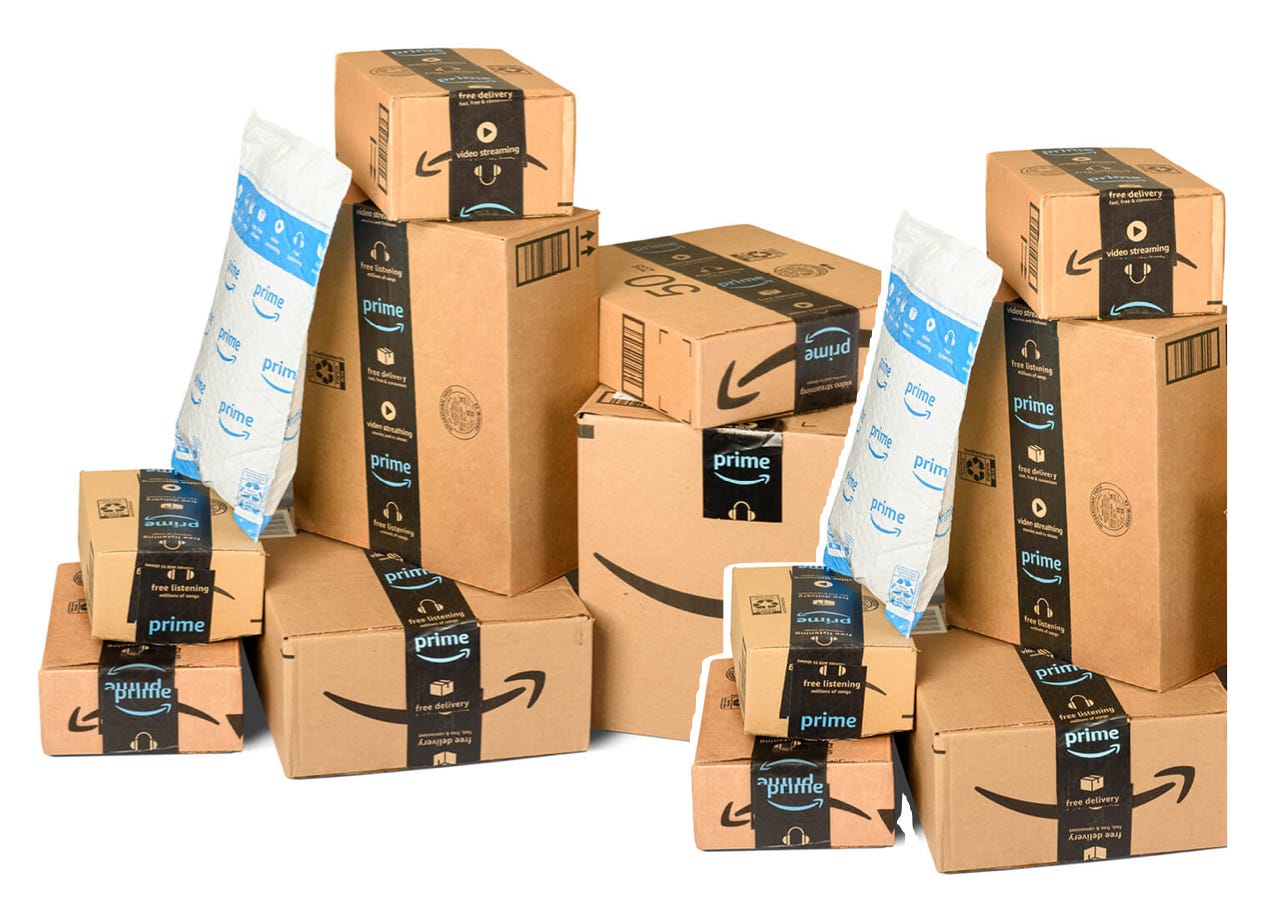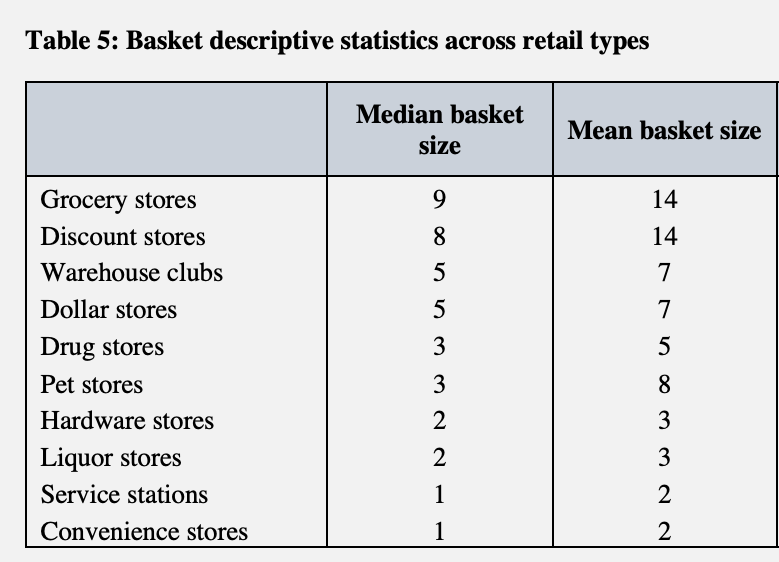Amazon deliveries are often better for the environment than driving to buy the stuff in a store
Driving is so bad for the climate that anything you can do to drive less is usually pretty good
I often hear people say that ordering things on Amazon is really environmentally wasteful, because having a truck deliver packages all the way to your door and then return to an Amazon facility is a lot of driving.
This never made sense to me. Most Americans seem to get the stuff they buy to their homes in one of two ways:
Order stuff online and have it delivered to their homes.
Drive to a store, pick the stuff up, and drive back.
Both involve a lot of driving. In the first case, a truck with a lot of packages is driving around a neighborhood in an algorithmically optimized path. The truck is carrying a lot of packages. The time the delivery is made is optimized to get the most stuff to the most people using the least time driving. The company that owns the truck has a lot of financial interest in using as little gas as possible. In the second case, someone is driving their (often very large) car to some store close by or far away, loading a few objects into their very large car (the objects often not taking up nearly as much room as is available) and then driving back.
Obviously some Americans walk or bike or take public transit to shop. However, only 5.1% of American shopping trips are done walking, and only 1.4% rely on public transit (Table 4-2 here). 92.1% of shopping trips happen in a private car. If you’re always walking or biking to run errands, you don’t need me to tell you that your choice is better for the environment than ordering from Amazon, but you’re also in an incredibly small minority in America.
Another counter-argument could be that Amazon encourages you to buy more stuff, and that’s why it’s bad for the environment. That may be, but that’s kind of a separate question about the stuff we buy in the first place.
Here I want to answer a simple question: should we be discouraging people from ordering stuff on Amazon for the sake of the climate if they would otherwise buy the same stuff in stores? It seems like the answer is no, and we should actually often encourage people to buy things online rather than driving their big cars across town to pick them up at stores.
I’m writing this about Amazon only because it’s the delivery service we have the most data on. This might be different for other companies.
Writing about AI’s energy use is frustrating because the numbers are so uncertain. This is not the case in transportation! Here we have much clearer well-established figures. What a relief.
The numbers
The average CO2 emissions of delivering an Amazon package from a local warehouse to your door is around 100 g.
The shipping materials that home delivery services use actually add way more to the carbon costs. They’re so significantly higher than the shipping materials retail stores use to get their goods to the store1 that I’ll consider the second to basically be zero. The packing cost per item delivered seems to be around 230 g CO2.
So the full carbon cost of delivering an Amazon package from the warehouse to your home seems to be ~330 g CO2 per package.
The average American car seemed to get around 22.4 miles per gallon of gas in 2021 (I’ll try to find more recent data).
A car burning a gallon of gas emits around 8.89 kg of CO2.
(1 gallon / 22.4 miles) x (8.89 kg CO2 / 1 gallon) = 8.89 kg CO2 / 22.4 miles = 0.40 kg CO2 / mile. So every mile the average American drives emits 0.4 kg CO2, or 400 g CO2.
Since an Amazon package uses 330 g CO2, and driving uses 400 g CO2 per mile, every mile of driving emits as much as it takes to deliver 1.2 Amazon packages from the warehouse to your home.
The supply chains used by e-commerce vs the average brick to get items to the warehouse/store in the first place seem to use the roughly the same amount of CO2 overall, with the additional CO2 of the transport used by e-commerce dwarfed by the CO2 emissions of keeping the physical brick and mortar store open. There seems to be a consensus that while e-commerce supply chains use more energy, that’s cancelled out by brick and mortar stores needing more energy just to maintain the physical building (keeping the lights, water, heat, and internet running among other things).
Similarly, Amazon returns involves driving to a drop off location, but returning an item you bought at a physical store also involves driving back to a store. I don’t know how to compare these two but I’ll assume the return rates and CO2 emissions involved are roughly equal. I’ll come back to this one if I change my mind.
How to interpret these numbers
Each mile the average American drives on a trip to a store (there and back) emits as much as having 1.2 Amazon packages delivered. So if you drive to a store 2 miles away, your trip will be 4 miles of driving in total, which is ~5 Amazon packages’ worth of emissions. The only way your shopping trip would be better for the environment than ordering on Amazon is if you were buying enough stuff to fit in these boxes:
The average American drives about 5.8 miles one way for each shopping trip (table 3-3), so that means the average shopping round trip (11.6 miles) emits as much as having 14 Amazon packages delivered.2
The average American is not buying this much stuff every single time they go shopping. Here’s a breakdown of how many items they buy in different stores:
American shopping trips often involve visiting multiple stores, but even then it seems hard to get the number up to enough items to fit in 14 Amazon packages when you remember that Amazon usually fits multiple items in each box.
So my takeaway is:
If you often drive to buy things, getting things delivered to your house will often be better for the climate, unless you’re buying a ton of stuff at once at a store that’s close by. Driving is just so uniquely bad for the climate compared to everything else we do that we shouldn’t be surprised by this.
A lot of this doesn’t apply if you have an electric car that’s powered by renewable energy.
If you walk or bike or take public transit to buy things, keep it up climate hero! Just make sure that if you do order things on Amazon, you don’t feel as bad about it as you would if you drove to pick it up instead.
I’ll repeat that I think individual emissions are mostly a big distraction from the real task climate conscious people should be focused on: making systematic change to our energy grid. However, driving less is maybe the clearest way that Americans can actually significantly cut their emissions, and maybe to do that you should consider buying things online more and driving to far away stores less. At the very least, you shouldn’t feel bad about ordering things online if your only other option is driving to pick them up.
In the long run, it seems like a world of hyper-optimized delivery routes for goods will probably be preferable for the climate compared to a world of individuals driving massive personal vehicles to stores that require a lot of energy and resources to maintain. More and better e-commerce will probably be net good for the climate compared to what we have now.
This report finds that e-commerce is only 17% more efficient than brick and mortar store purchases, but it’s from 2020 and assumes that CO2 from delivery vehicles are 6x higher than what they currently are given more recent numbers.
Or sending 4200 ChatGPT prompts.





I would guess return rates are higher buying online because you've not seen the items. Much easier to have got something that's not the size you were expecting, different colour, etc etc.
People are going to be big mad in the comments, I support you.